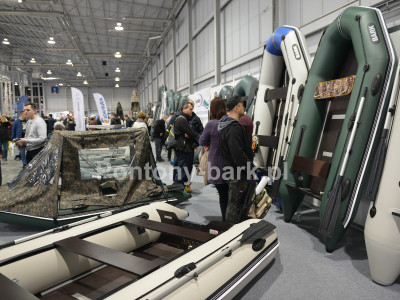PROPER USE
Understanding the needs of the user; Adhering to international standards (which we consider to be baseline, i.e., standards that must be surpassed); Recording global best practices in boats production. This is the basis for the production and modernization of BARK boats. When producing them, we use special computer programs that allow, among other things, to model the behavior of the boats in various situations during its use. Even at this stage the best variants of construction are selected. The final choice is made after a whole series of mandatory tests of the boats prototype.
All this, plus a whole lot of our know-how, gives the uniqueness of the design, thanks to which the production of BARK PVC boats has its advantages.
For example:
The raised sharp nose increases the boats shock-absorbing capabilities. The boats flow better through waves and have better speed performance than pontoons with the same engine but with a blunted bow. At the same time, BARK pontoons of the BN series (the sharpest bow)in terms of speed surpass the absolute majority of other recreational boats and make them close to sports racing pontoons.
BARK boats of other series have a bow with gentle optical angles. Hence the added ability to carry waves lightly. At the same time, the speed characteristics remain high enough to outperform recreational boats of other brands. This has also been proven by practice, and in particular in unofficial races, in which owners of BARK boats have repeatedly won.
Increased diameters of balloons in some models of BARK boats in comparison with the standard diameters in most pontoons of similar length. Therefore, such BARK boats have better buoyancy. And, of course, the balloons of all BARK pontoons are divided into compartments corresponding to international standards. The number of compartments is calculated accordingly for each model - from 2 to 5, without the inflatable keel with which keel pontoons are lined. Diaphragms - baffles allow to equalize the pressure in the chambers.
Fastening the board under the engine. In boats with attached board, we use a proven and reliable method of attaching with a string. At the same time, the fastening is arranged to secure the optimal position of the engine, without losing the shock-absorbing properties. To this end, BARK motor boats with a stationary board have a board angle optimally adjusted to the specific model, depending on the example engine capacity, type of bottom - flat or inflatable keel.
We fix stationary boards with straps (two layers of thickened fabric with increased tightness). We do not use popular ready-made holders for the reason that none of them has yet satisfied our expectations.
Perhaps we are too demanding, but nevertheless experience shows perfectly: even with the best ready-made holders there is a high risk of losing the board with the motor during operation.
Because even with the best ready-made holders, the edges of the keyway (into which the board is glued) are not wide enough for secure attachment. And insufficiently etched to compensate for the deformation created by the movement of the motor. Our method of attachment perfectly copes with such a load and safely holds the stern. This has been verified by experience. Protective bottom veneer. A central protective profile on motorized keel pontoons is not uncommon. But the veneer where the bottom is attached to the side is an exceptional case. All BARK boats with a stationary board are lined with it. And keel boats, and those with a flat bottom. Hence the protective properties of the bottom from unnecessary friction (when pulling ashore, transporting on a trailer). The extra veneer also increases the pontoon's maneuverability in corners.
-1024x768.jpg)
-400x300.jpg)

Write a comment